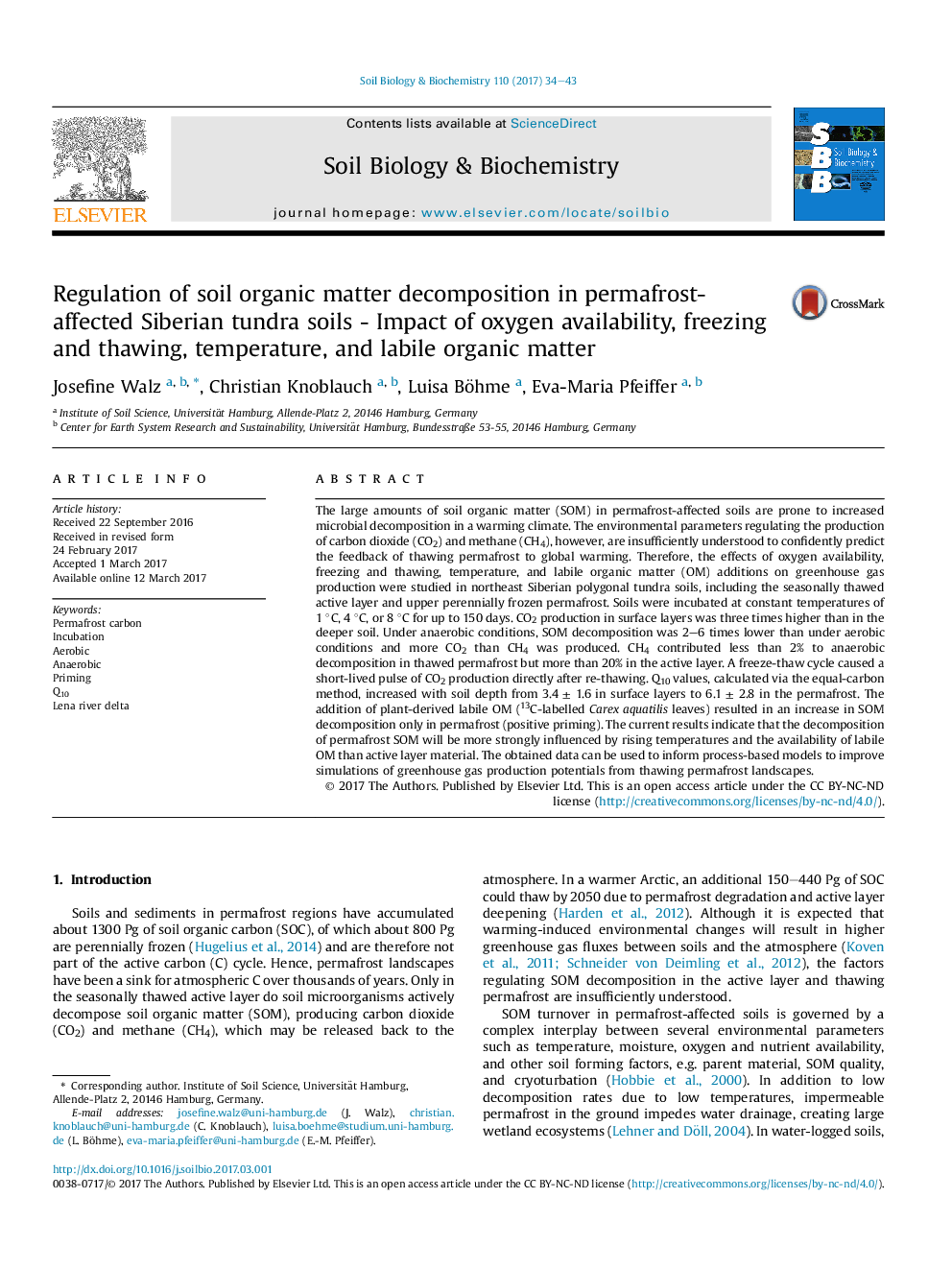| کد مقاله | کد نشریه | سال انتشار | مقاله انگلیسی | نسخه تمام متن |
|---|---|---|---|---|
| 5516397 | 1542574 | 2017 | 10 صفحه PDF | دانلود رایگان |
- SOM decomposition in the active layer and permafrost regulated by different factors.
- Freeze-thaw cycle increased CO2 production only in the active layer.
- Q10 values higher for permafrost than for active layer material.
- Positive priming effect only observed in permafrost.
- Additional C released from thawing permafrost contributes substantially to future greenhouse gas production.
The large amounts of soil organic matter (SOM) in permafrost-affected soils are prone to increased microbial decomposition in a warming climate. The environmental parameters regulating the production of carbon dioxide (CO2) and methane (CH4), however, are insufficiently understood to confidently predict the feedback of thawing permafrost to global warming. Therefore, the effects of oxygen availability, freezing and thawing, temperature, and labile organic matter (OM) additions on greenhouse gas production were studied in northeast Siberian polygonal tundra soils, including the seasonally thawed active layer and upper perennially frozen permafrost. Soils were incubated at constant temperatures of 1 °C, 4 °C, or 8 °C for up to 150 days. CO2 production in surface layers was three times higher than in the deeper soil. Under anaerobic conditions, SOM decomposition was 2-6 times lower than under aerobic conditions and more CO2 than CH4 was produced. CH4 contributed less than 2% to anaerobic decomposition in thawed permafrost but more than 20% in the active layer. A freeze-thaw cycle caused a short-lived pulse of CO2 production directly after re-thawing. Q10 values, calculated via the equal-carbon method, increased with soil depth from 3.4 ± 1.6 in surface layers to 6.1 ± 2.8 in the permafrost. The addition of plant-derived labile OM (13C-labelled Carex aquatilis leaves) resulted in an increase in SOM decomposition only in permafrost (positive priming). The current results indicate that the decomposition of permafrost SOM will be more strongly influenced by rising temperatures and the availability of labile OM than active layer material. The obtained data can be used to inform process-based models to improve simulations of greenhouse gas production potentials from thawing permafrost landscapes.
Journal: Soil Biology and Biochemistry - Volume 110, July 2017, Pages 34-43
